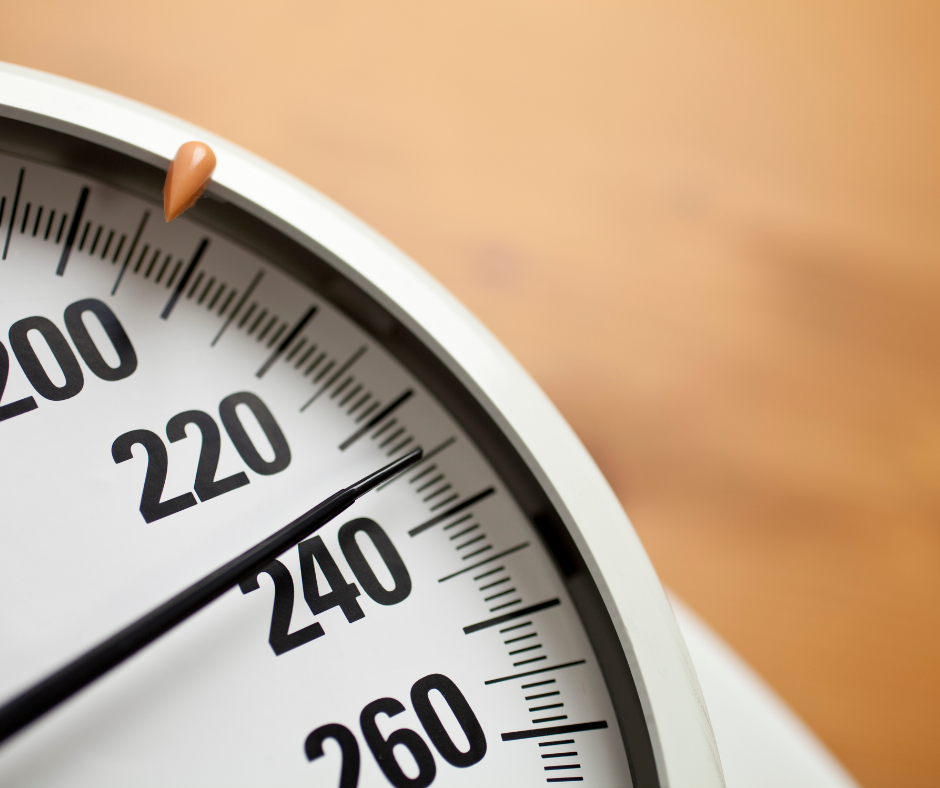Body Weight
Obesity is one of the traditional top five risk factors for heart disease.
Extra pounds lead to chronic low-grade inflammation which is an unhealthy, self-perpetuating response at the root of many chronic conditions, including cardiovascular disease, Type 2 diabetes and cancer. Click HERE to learn more.
Obesity is linked to several standard lipid panel (or blood test) results including:
- Higher LDL cholesterol (“bad” cholesterol)
- Lower HDL cholesterol (“good” cholesterol)
- Higher triglycerides
Metrics

How do we know if we are considered overweight or obese?
Yes, the scale in and of itself can be informative. However, there are three additional metrics that provide valuable information. They look beyond the scale. They estimate body fat percentage and assess abdominal fat.
Body Mass Index (BMI)
BMI uses your weight and height to estimate body fat for adults.
Click HERE to calculate your BMI.
| BMI Interpretation |
| < 18.5 underweight |
| 18.5-24.9 healthy weight |
| 25-29.9 overweight |
| 30+ obese |
Waist Circumference
This metric takes into account the fat within the abdominal region.
The location of fatty tissue matters when it comes to the level of risk associated with heart disease. Abdominal, or visceral, fat is more metabolically active and is associated with an increased risk of cardiovascular issues. It creates a domino effect of metabolic processes which promote insulin resistance, inflammation and oxidative stress.

To measure waist circumference:
- Stand up straight.
- Locate your hip bones and place the flexible measuring tape just above them. Make sure the tape measure is flat against your body and parallel to the floor (not rising up against your back or front). The tape measure should be snug against your skin but not tight enough to cause an indent. Take the measurements in a mirror to help follow these instructions.
| Healthy Waist Measurement |
| < 35 inches for women |
| < 40 inches for men |
Waist-to-Hip Ratio
Another metric that takes into account the fat within our abdominal region is the waist-to-hip ratio.
To calculate, divide your waist measurement by your hip measurement.
- How to take a waist measurement: (see above)
- How to take a hip measurement:
- Stand up straight.
- Measure the largest part of your hips. The tape measure should be snug against your skin but not tight enough to cause an indent. Take the measurements in a mirror to help follow these instructions.
| Healthy Waist-to-Hip Ratio |
| .80 or less for women |
| 1.0 or less for men |
Take Action
Use these measurements to assess your body weight today. Interpret the results based upon the charts provided. What did you learn?
As you change your eating behaviors, revisit these metrics once a month to measure your progress in reaching a healthier body weight.
